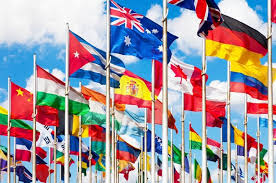Microfinance: A Strategic Approach to Poverty Alleviation and Sustainable Development
Introduction: Defining Key Concepts
This analysis examines microfinance, a financial inclusion strategy employing small-scale financial services to empower economically marginalized populations. We define microfinance as the provision of financial services – including microcredit (small loans), savings mobilization, microinsurance, and money transfers – to low-income individuals and microenterprises typically excluded from traditional banking systems. This aligns with the broader concept of financial inclusion, aiming to ensure equitable access to financial services for all. The effectiveness of microfinance is evaluated against its contribution to poverty eradication and sustainable development, primarily through the lens of the United Nations' Sustainable Development Goals (SDGs). We will explore the application of relevant theories, such as the Capability Approach and the Social Capital Theory, to understand the impact of microfinance.
Microfinance as a Tool for Poverty Reduction and Economic Empowerment
Microfinance initiatives directly address the structural inequalities that perpetuate poverty. By providing access to credit, savings mechanisms, and insurance, microfinance empowers individuals to participate more fully in the economy. This resonates with Amartya Sen's Capability Approach, which emphasizes expanding individual capabilities to achieve well-being. Access to financial resources enables individuals to invest in income-generating activities, improving their livelihoods and fostering self-reliance. The expansion of microenterprises contributes to broader economic growth, creating a ripple effect across communities.
The Synergy between Microfinance and the Sustainable Development Goals (SDGs)
Microfinance's alignment with the SDGs is demonstrably strong. Firstly, it directly contributes to SDG 1 (No Poverty) by providing individuals and households with the means to escape the poverty trap. Secondly, by stimulating entrepreneurship and creating employment opportunities, microfinance makes significant contributions to SDG 8 (Decent Work and Economic Growth). Furthermore, the empowerment of women through microfinance supports SDG 5 (Gender Equality) and improves overall health and well-being (SDG 3). The impact transcends purely economic gains; it fosters social inclusion and promotes sustainable development at the community level.
Successful Microfinance Models and Technological Advancements
The Grameen Bank model, pioneered by Muhammad Yunus, showcases microfinance's transformative potential. Its focus on group lending and women's empowerment has significantly improved the lives of millions in Bangladesh. This illustrates the power of social capital, where strong social networks facilitate trust and reduce transaction costs. The rise of digital technologies further enhances microfinance’s reach and efficiency. Mobile banking and online platforms extend financial services to previously unbanked populations, particularly in remote areas. This technological leap demonstrates the power of innovation in financial inclusion.
The Crucial Role of Women in Microfinance's Success
Studies consistently demonstrate that women are particularly effective users of microfinance, displaying higher repayment rates and reinvesting profits to improve household welfare. This aligns with research highlighting the positive impact of empowering women on household income and child well-being. By focusing on women, microfinance initiatives not only address gender inequality, but also contribute significantly to household and community development. This empowerment is key to both economic and social development.
Collaboration, Financial Literacy, and Scaling Up Initiatives
Effective microfinance necessitates a collaborative approach involving governments, NGOs, financial institutions, and local communities. A multi-stakeholder strategy optimizes resource allocation and ensures sustainability. Crucially, alongside access to finance, promoting financial literacy is vital. Equipping individuals with knowledge of financial management skills empowers them to use microfinance effectively and sustain long-term economic independence. Scaling up microfinance requires substantial investment, both financially and in terms of technical assistance and supportive policy frameworks. This includes promoting appropriate regulatory environments that facilitate the growth of responsible and sustainable microfinance institutions.
Individual Contributions and Collective Action
The responsibility for promoting microfinance extends beyond governments and institutions. Individuals can contribute through direct investment, donations, or volunteer work. Such actions demonstrate individual agency in tackling global poverty and fostering sustainable development. Collective action, where individuals, organizations, and governments work together, is essential for achieving large-scale impact.
Conclusion and Recommendations
Microfinance demonstrates a powerful approach to poverty reduction and sustainable development. Its success hinges on integrating the Capability Approach, leveraging technological advancements, and promoting strong collaborations. Further research should focus on evaluating the long-term impact of microfinance on income inequality and its effectiveness across various contexts. Governments should prioritize policy frameworks that support financial inclusion and responsible microfinance practices. International organizations should increase investments in microfinance initiatives and promote financial literacy programs. Individuals can contribute significantly by supporting microfinance institutions and advocating for policies that promote financial inclusion. A concerted effort across all stakeholders is necessary to realize the full potential of microfinance in achieving a more equitable and sustainable global future.
Reader Pool:
Considering the complexities of scaling microfinance globally and ensuring its long-term sustainability, what innovative strategies can be implemented to enhance its impact and reach while mitigating potential risks?





No comments yet. Be the first to share your thoughts!